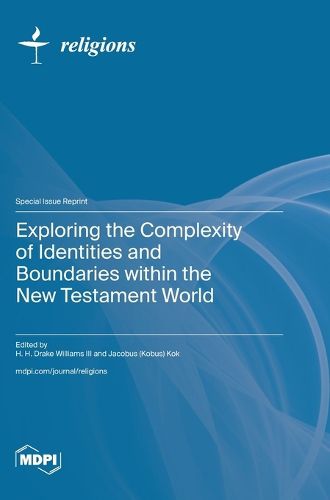Readings Newsletter
Become a Readings Member to make your shopping experience even easier.
Sign in or sign up for free!
You’re not far away from qualifying for FREE standard shipping within Australia
You’ve qualified for FREE standard shipping within Australia
The cart is loading…






This title is printed to order. This book may have been self-published. If so, we cannot guarantee the quality of the content. In the main most books will have gone through the editing process however some may not. We therefore suggest that you be aware of this before ordering this book. If in doubt check either the author or publisher’s details as we are unable to accept any returns unless they are faulty. Please contact us if you have any questions.
The objective of this Special Edition is to engage in a critical examination of the intricate nature of identity as depicted in the New Testament and the related literature, particularly through the lens of social identity complexity theory. Methodologically, this reprint builds upon the most recent advancements in New Testament studies, where social identity theory, as developed by Tajfel and Turner, has been effectively employed to explore the dynamics of identity formation within New Testament texts. Philip Esler pioneered this approach in New Testament studies during the early 1990s. Since then, the field has evolved, with increasing attention paid to nested and co-existing identities. This trend is seen in the edited T&T Clark Social Identity Handbook (Tucker et al. 2014) and Commentary (Tucker and Kuecker at al 2019). The social psychologists Roccas and Brewer developed social identity complexity theory (SICT) in recent years, and Jacobus Kok was the first New Testament scholar to apply this theory as a heuristic tool within New Testament studies. This theoretical framework offers new avenues for critically reflecting on the complexity inherent in nested and co-existing identities, as well as the varying degrees of complexity and boundary distinctions they may represent. This volume makes a novel contribution to the field by critically examining both the theoretical aspects of SICT and the fresh insights it provides for New Testament and early Christian studies.
$9.00 standard shipping within Australia
FREE standard shipping within Australia for orders over $100.00
Express & International shipping calculated at checkout
This title is printed to order. This book may have been self-published. If so, we cannot guarantee the quality of the content. In the main most books will have gone through the editing process however some may not. We therefore suggest that you be aware of this before ordering this book. If in doubt check either the author or publisher’s details as we are unable to accept any returns unless they are faulty. Please contact us if you have any questions.
The objective of this Special Edition is to engage in a critical examination of the intricate nature of identity as depicted in the New Testament and the related literature, particularly through the lens of social identity complexity theory. Methodologically, this reprint builds upon the most recent advancements in New Testament studies, where social identity theory, as developed by Tajfel and Turner, has been effectively employed to explore the dynamics of identity formation within New Testament texts. Philip Esler pioneered this approach in New Testament studies during the early 1990s. Since then, the field has evolved, with increasing attention paid to nested and co-existing identities. This trend is seen in the edited T&T Clark Social Identity Handbook (Tucker et al. 2014) and Commentary (Tucker and Kuecker at al 2019). The social psychologists Roccas and Brewer developed social identity complexity theory (SICT) in recent years, and Jacobus Kok was the first New Testament scholar to apply this theory as a heuristic tool within New Testament studies. This theoretical framework offers new avenues for critically reflecting on the complexity inherent in nested and co-existing identities, as well as the varying degrees of complexity and boundary distinctions they may represent. This volume makes a novel contribution to the field by critically examining both the theoretical aspects of SICT and the fresh insights it provides for New Testament and early Christian studies.